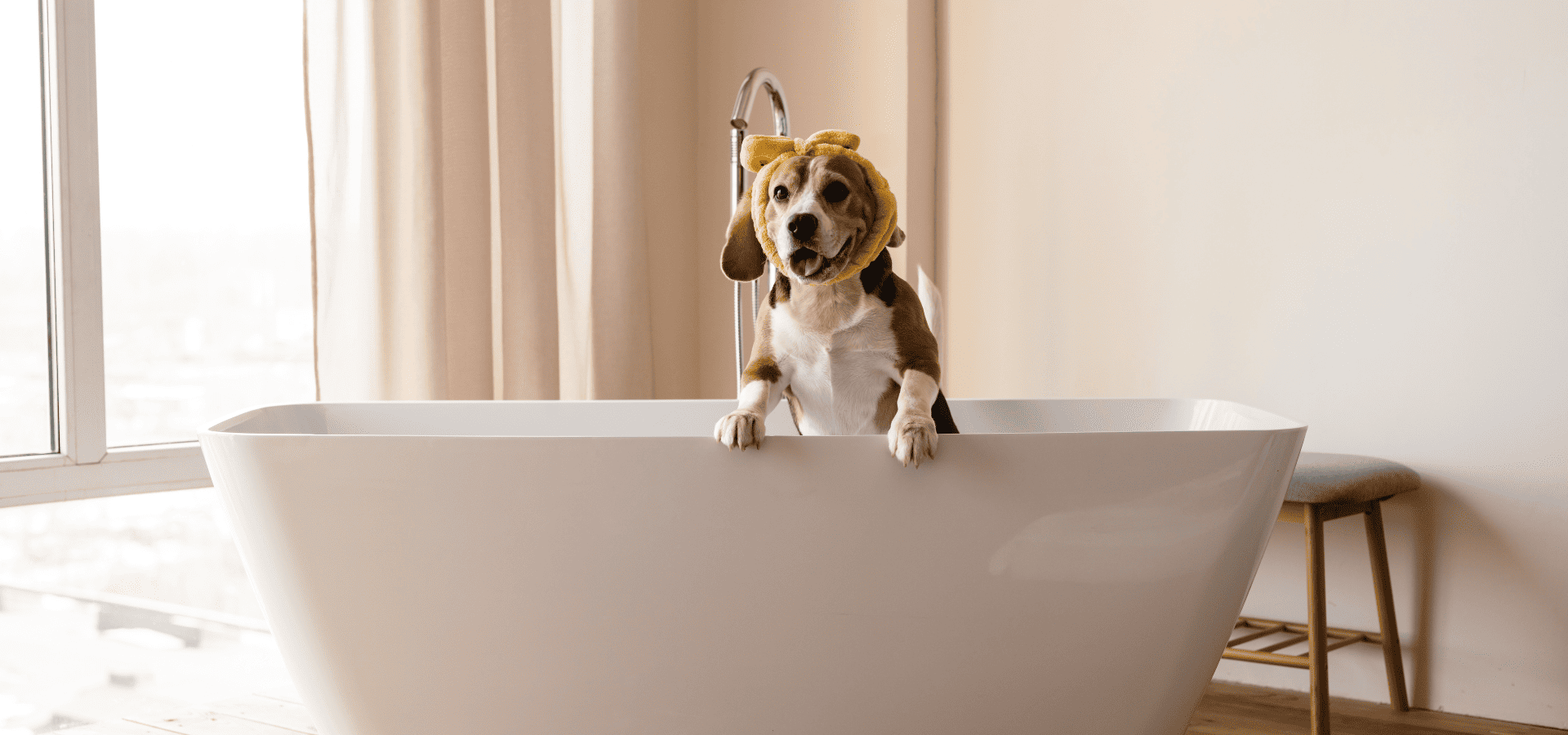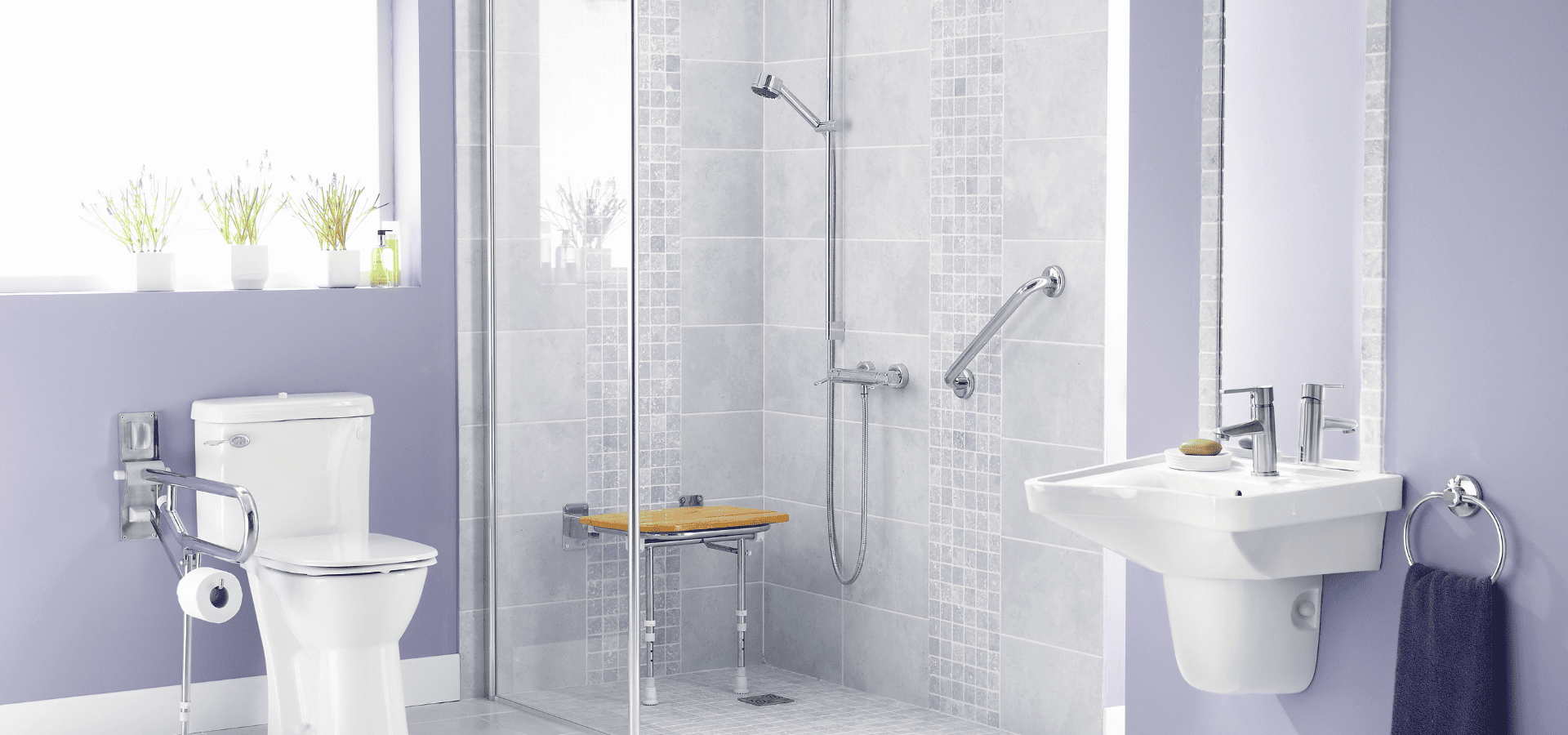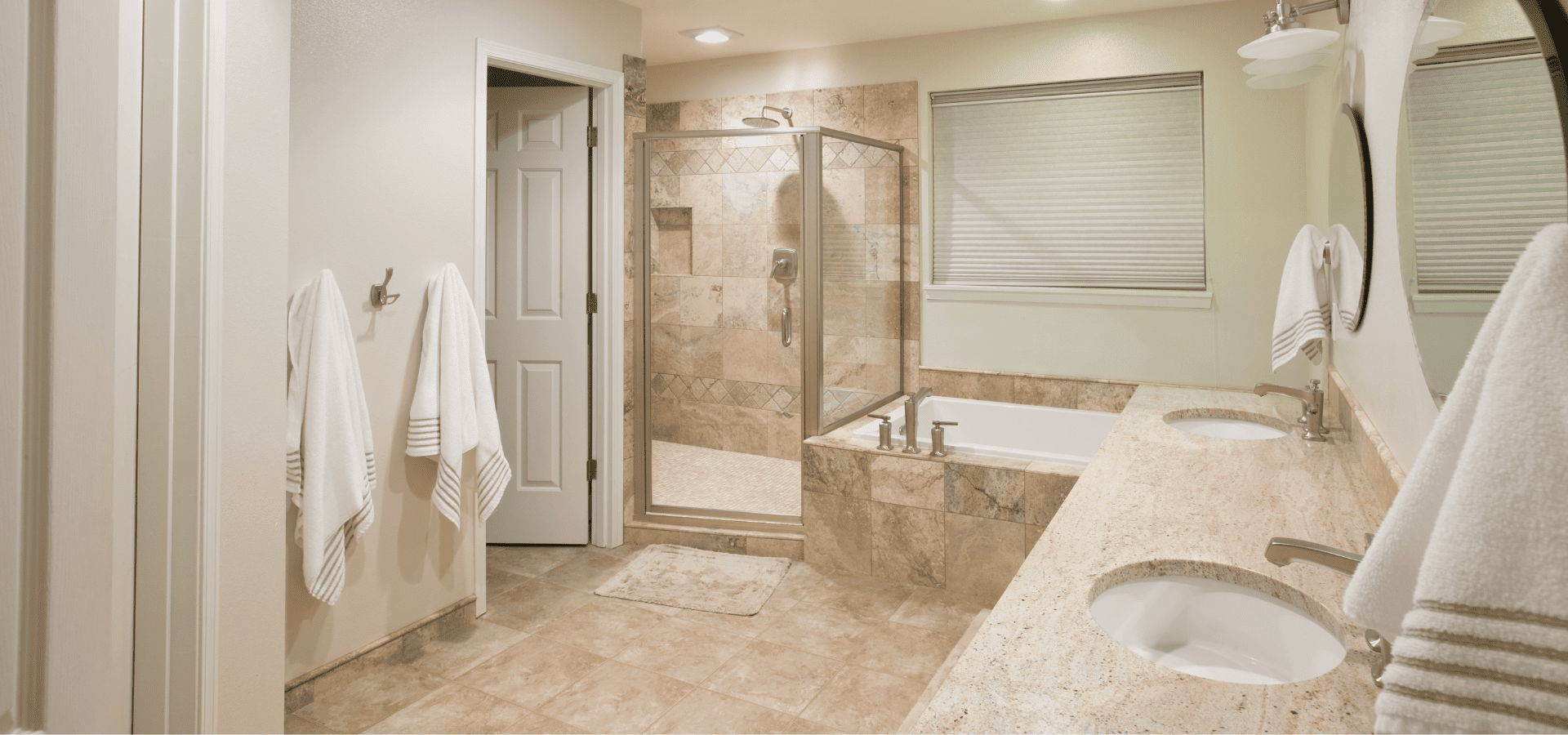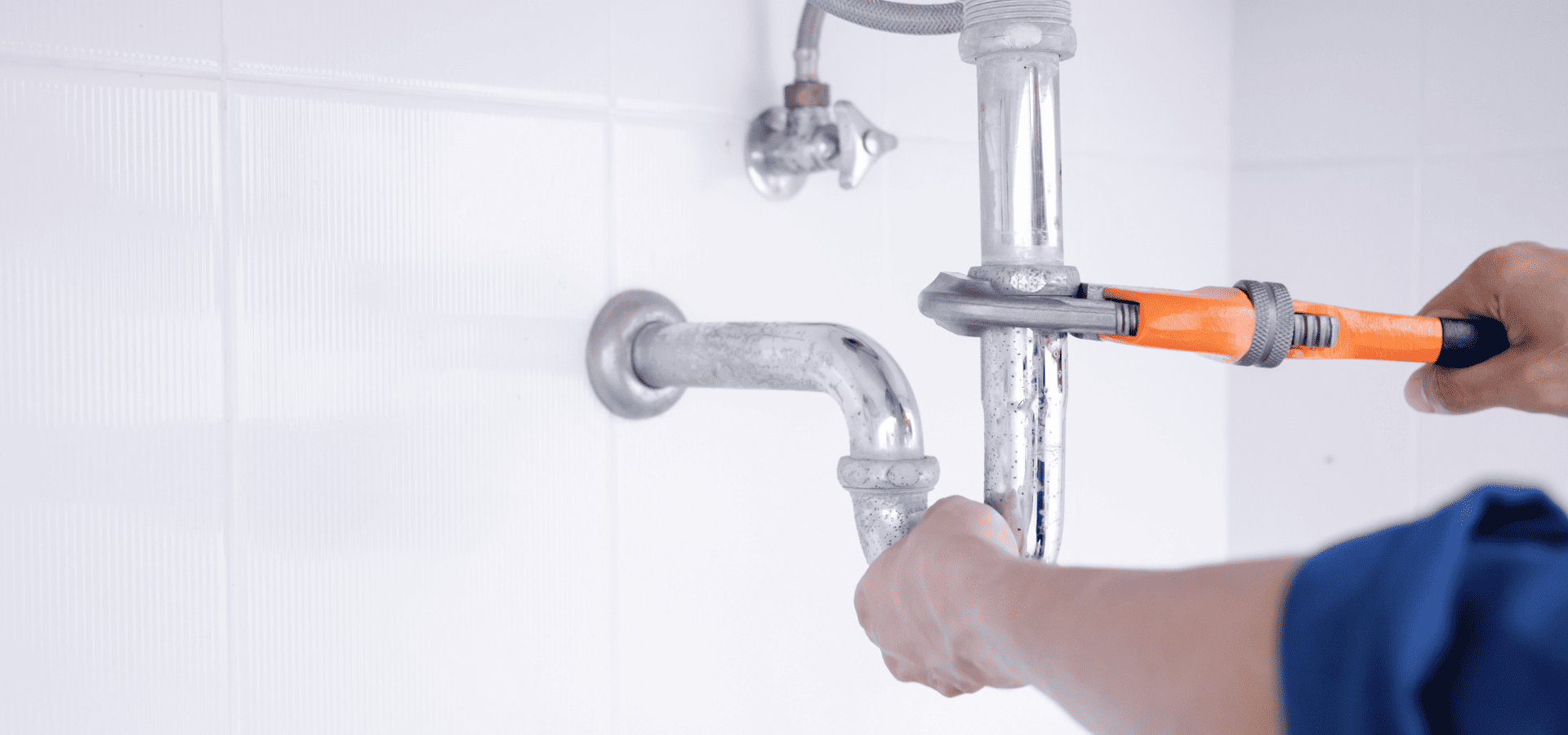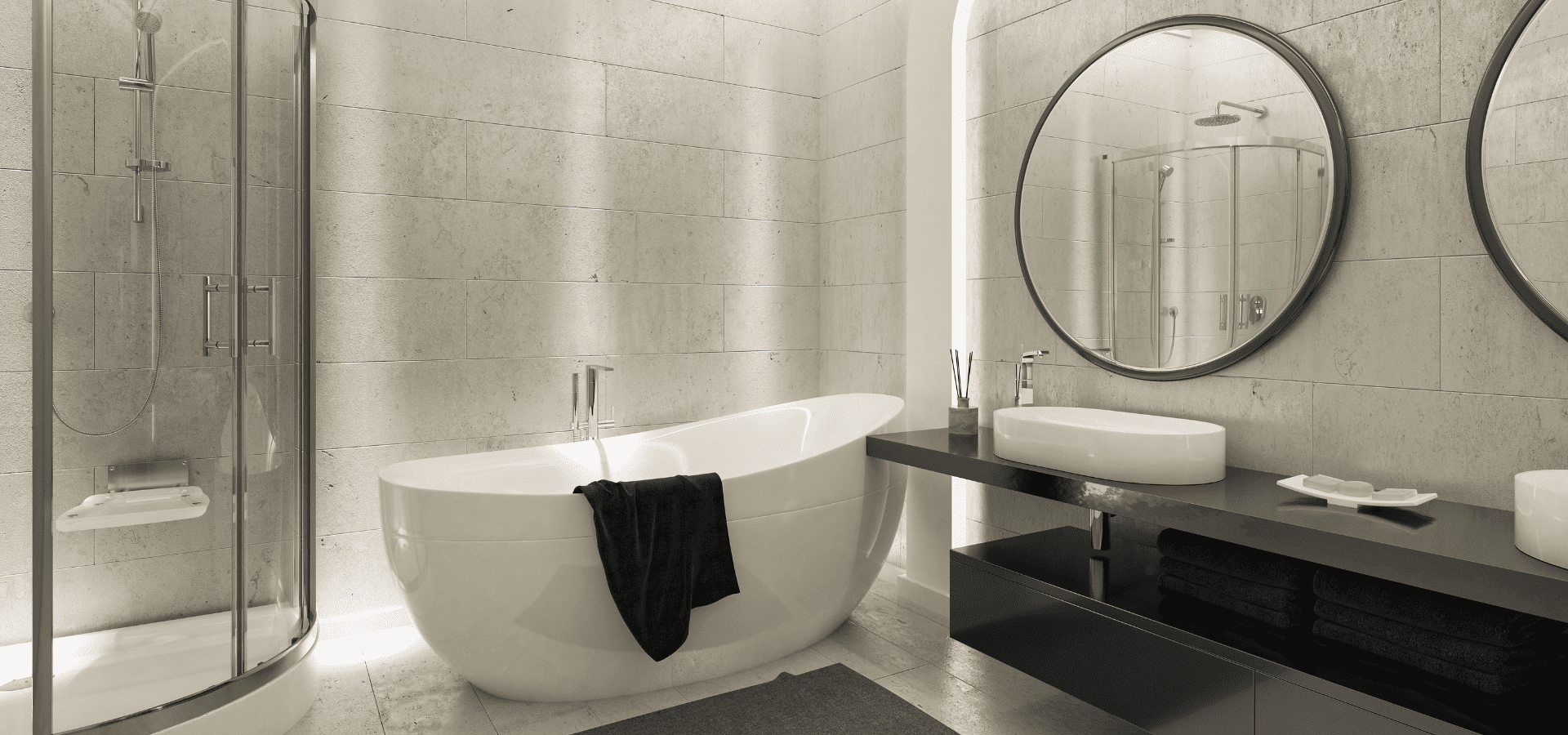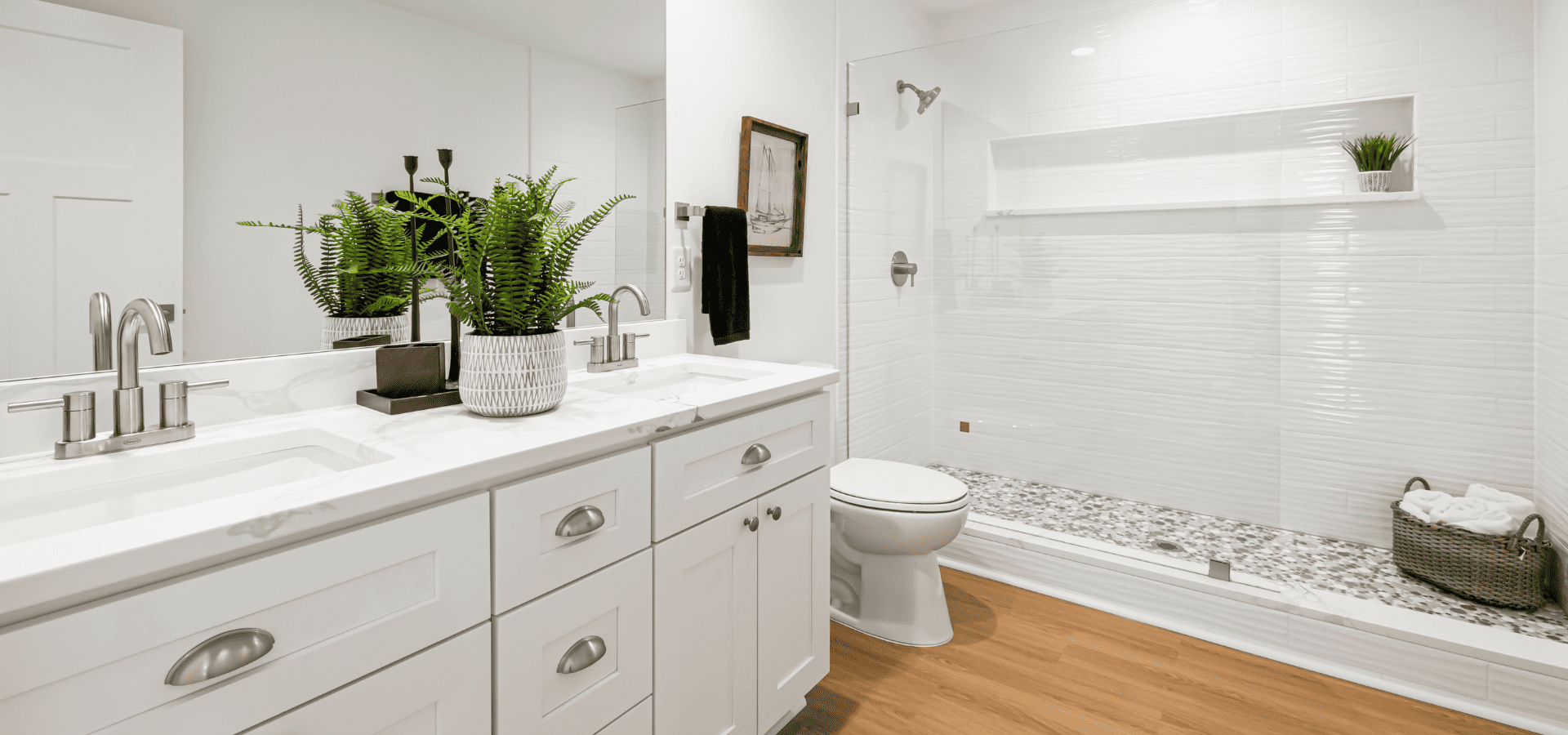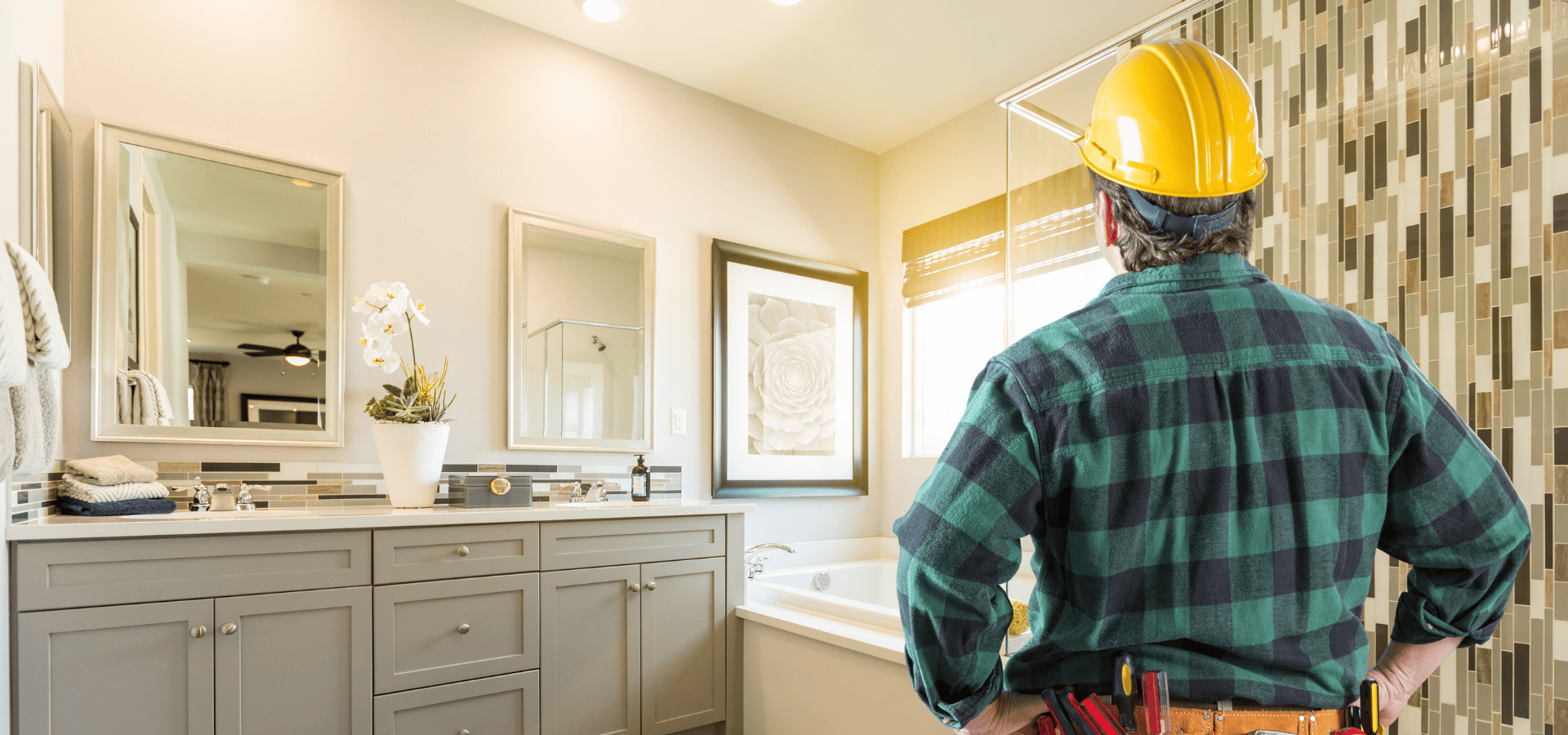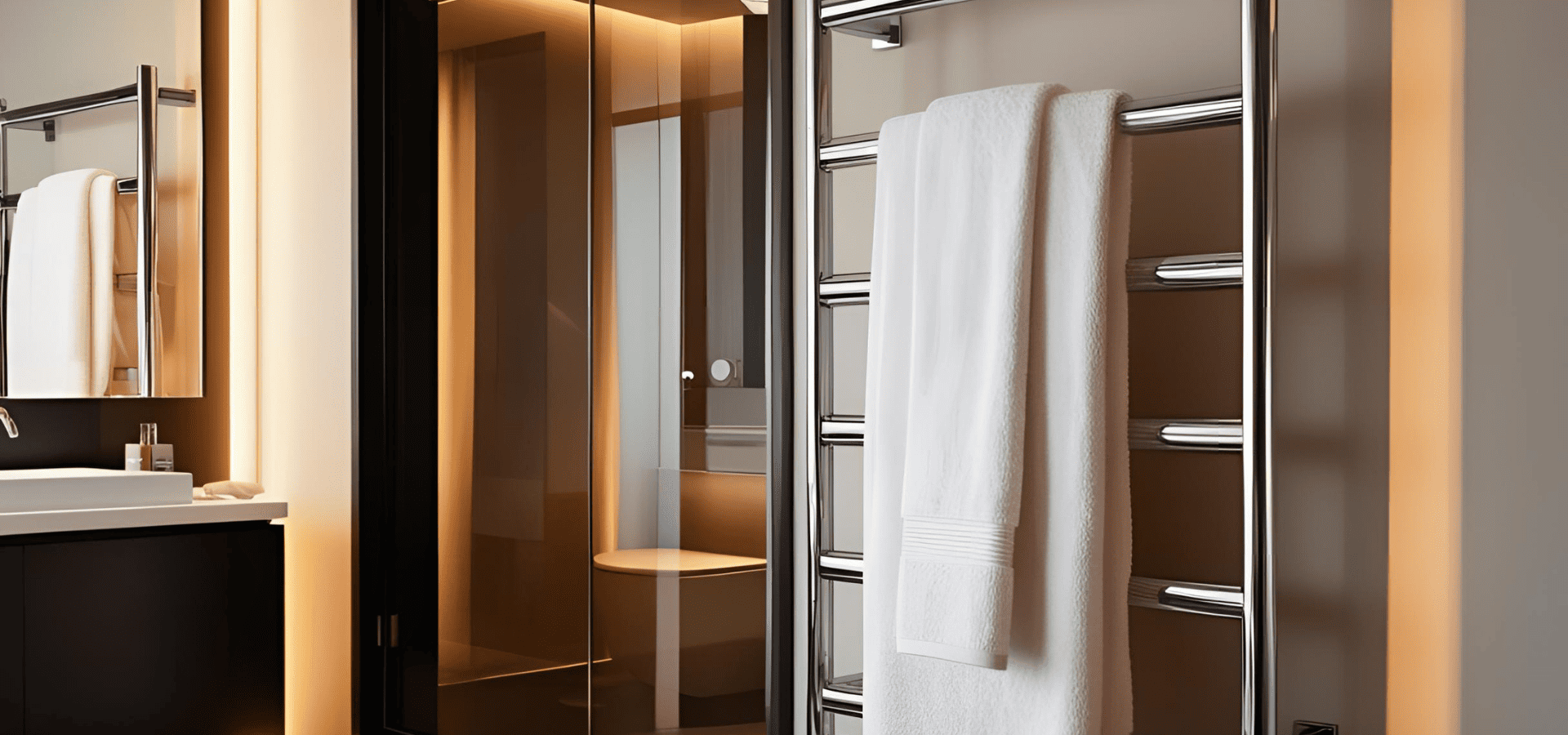Industrial Bathroom Design Guide
Industrial bathrooms don’t bother with subtlety. They’re not hiding the pipes, tucking away the metal, or sugarcoating concrete with a polite layer of decorative tile. They show their bones.
It’s not a fit for everywhere. But if you live somewhere with a similar vibe to Denver, where design taste tends to run rugged-meets-refined, that honesty feels right at home.
Walk into a well-done industrial bathroom and you might notice the contrast first: a matte black shower frame set against a sunlit brick wall, or a polished concrete floor warmed by radiant heat.
But it’s a style that works shockingly well for a wide range of homes — deeply functional and carrying an edge without tipping into fad territory.
The trick is pulling it off. Especially if you live in an area like Denver, where dry winters, bright sun, or even just a resale-minded market are a concern.
It takes more than slapping steel fittings on a vanity and calling it a day. So let’s dive into how to design an industrial bathroom the right way.
Building the Space Like You Mean It
Industrial design starts with structure. Not just the visible elements, but the way the room is laid out.
In older homes, bathrooms tend to have quirky proportions or plumbing that snakes in unpredictable ways. These are the legacies of decades-old renovations. Instead of fighting those bones, industrial style lets you make a feature of them.
That exposed copper pipe you were thinking about hiding? It can become part of the room’s visual rhythm. (Provided it’s properly insulated against the occasional cold snap.)
The existing brick behind a plaster wall? If it’s sound, let it see daylight — it’ll instantly warm up the coolness of steel and glass.
Any old-school home that reflects old-school craftsmanship will often have solid structural details like these that bring weight and authenticity. A new build’s “exposed” elements can only imitate bones this good.
So if you can, strip back rather than add. You might just find the magic that was hiding underneath those decades of renovations.
Materials That Feel Honest
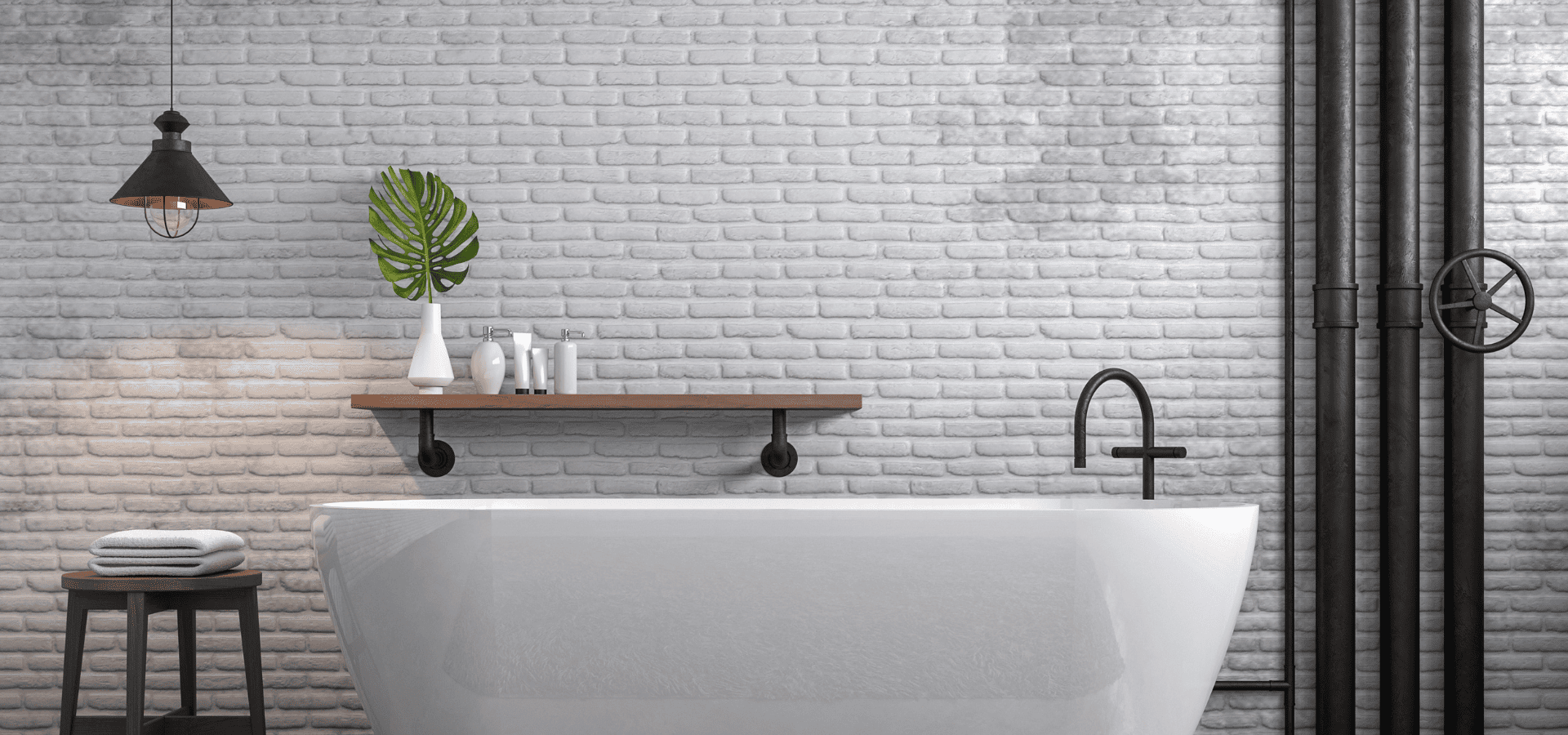
Industrial style leans on a handful of core materials, but how you mix and finish them is where the character comes in. In places that share Denver’s dry air and bright light, you’ve got the chance to really let those textures speak.
But you do need to make sure that they’re built to handle the elements.
- Concrete can make for a striking floor, but it benefits from a soft matte seal and underfloor heating to keep it from reading too stark.
- Metals like steel, iron, and brushed nickel are naturals here. And if you’re not living near the salty air of the ocean, powder-coated finishes won’t rust like they might on the coast. Aged brass holds its patina without going sticky.
- Brick and stone add tactile depth, whether original and exposed or introduced as veneer. In a loft, the brick might be the hero backdrop to a glass shower. In a bungalow, it adds edge without clashing with the architecture.
- Wood works best as a warmer counterpoint — think reclaimed shelving or vanity details. Just make sure it’s sealed against shifting humidity levels.
The key to all of it? Contrast. Warm wood against cool steel. Rough concrete next to clean-lined glass.
Let the materials play off each other instead of shouting over each other.
Finishes, Hardware, And The Long Game
Industrial bathrooms might look low-maintenance, but they reward the details. A polished concrete floor might start out gorgeous… But without regular sealing, it can stain or dull.
The same goes for uncoated metal: a little patina adds character. But full corrosion? Not so chic.
Think about longevity when choosing finishes.
- Want raw steel accents? Powder-coated or wax-sealed versions will hold up better in damp zones.
- Love the look of unlacquered brass? Gorgeous — just know it’ll darken and spot over time, which might not be everyone’s vibe.
- Using tile with industrial flair? Choose a grout that won’t show every splash and speck.
Hardware matters, too. Go for pieces that feel solid in the hand. Industrial design is all about tactile honesty, so that drawer pull or valve handle should feel as sturdy as it looks.
The more these elements age gracefully, the more the room tells a story over time.
Working With The Light And Climate
One of the best assets an industrial bathroom can have is natural light. If you get a lot of sunny days a year in your area, you can get away with deep charcoals, rich blacks, and concrete greys without sinking into gloom.
However, that sunlight comes with UV punch, even indoors. If your bathroom has a generous window — especially a south-facing one — pick wall paints with UV resistance, or you might find your perfect dark tone softening unevenly over time.
The other climate quirk to plan for is dryness. High humidity is easy: you just add ample ventilation and use materials built for it.
But inversely, low humidity can catch a lot of people off guard. It might be great for keeping mold at bay, but it’s tough on certain materials. Unsealed woods can split, and untreated concrete can hairline crack. So seal, seal, seal, and then seal again. And if you’re using reclaimed wood for shelving or vanities, make sure it’s been treated for indoor use.
Temperature swings matter too. Denver can give you a balmy day and a frosty night in the same week, so avoid materials that will expand and contract dramatically unless they’ve been properly stabilized.
Fixtures With A Presence
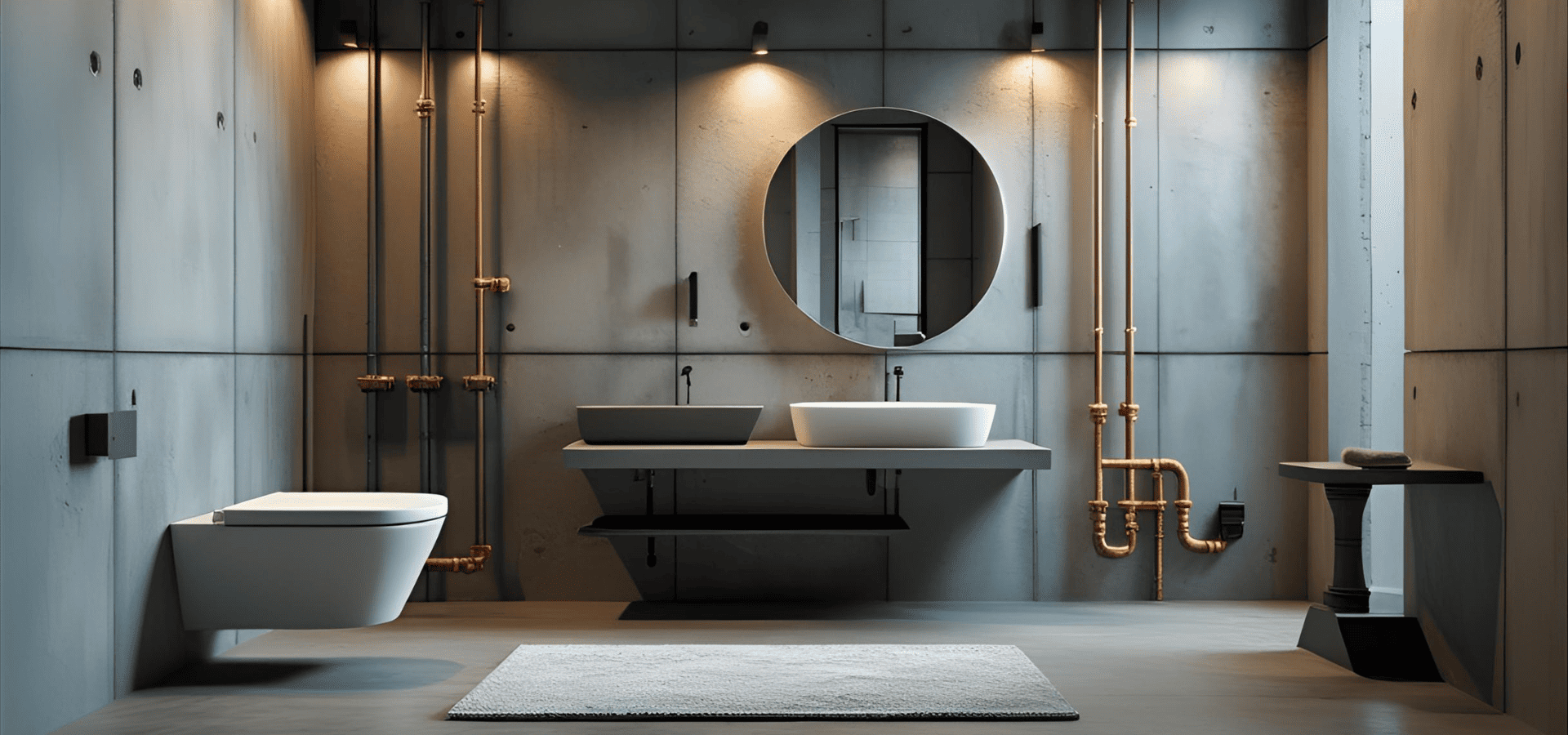
In an industrial bathroom, the fixtures aren’t just functional: they’re part of the architecture. So think pieces that feel grounded, weighty, and intentional:
- A wall-mounted trough sink with exposed steel legs makes a sculptural statement.
- Exposed shower risers and squared-off valves become focal points rather than background plumbing.
- Cage-style sconces or articulated-arm lamps nod to old workshops while pulling their weight as task lighting.
Just remember: metal gets cold. Especially on a January morning. So balance it with:
- Thick cotton towels in open shelving
- A heavy woven bath mat underfoot
- A low-humidity-loving plant like snake plant, aloe, or ZZ to add some quiet vitality
Without those comfort touches, your bathroom risks feeling more showroom than sanctuary.
Storage Without The Bulk
Industrial style leans away from chunky cabinetry in favor of open shelving, steel frames, and furniture-like vanities. For example, in a Denver context, that openness can make even a modest bathroom feel larger.
That said, you’ll want to be realistic about what’s on display. Rolled towels? Great. But a hair dryer with snaking cords? Less so.
One solution is the hybrid approach: open shelves for the things you want to show, and closed drawers for the things you don’t. Powder-coated steel paired with reclaimed wood makes a perfect frame — it’s durable in a dry climate, and the wood keeps the look from tipping into full “machine shop.”
Comfort In A Hard-Edged Space
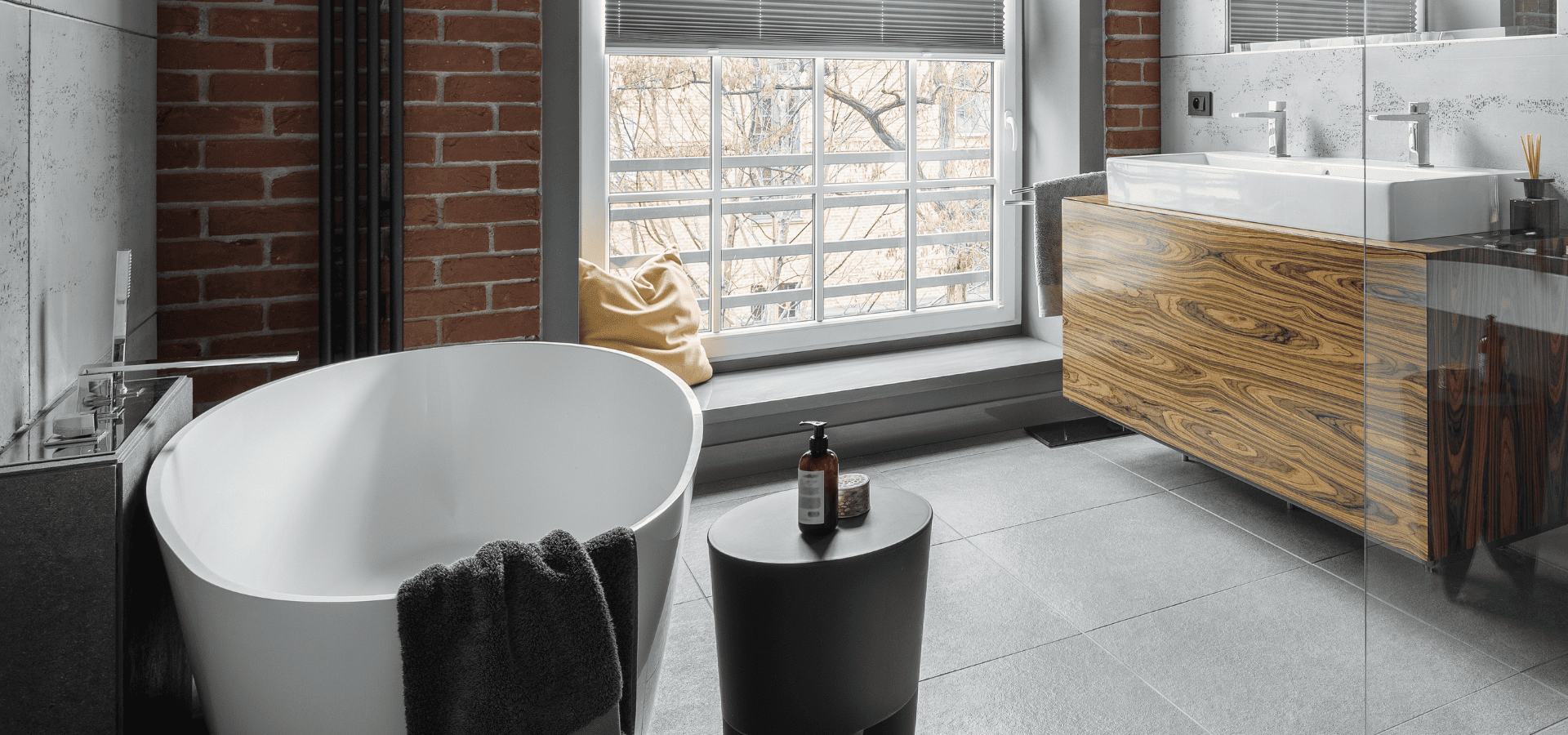
The industrial look can easily slide into “too cold” if you forget that a bathroom’s ultimate job is comfort. So build that in on purpose:
- Heated floors are worth every penny in winter. Concrete's cool until your feet touch it at 7 a.m. on a frigid late December morn.
- Layered lighting lets you shift from bright and functional to soft and calm, perfect for the morning vs night cycle.
- Sound-absorbing touches like textiles, rugs, or wood accents take the edge off all those hard surfaces too.
A good industrial bathroom doesn’t just look sharp — it feels balanced. Strong and soft; raw and considered.
Keeping It Market-Savvy
A strong industrial bathroom remodel can add appeal in a market, but it depends on various factors. For example, they get some serious eyeballs on them in Denver’s market, particularly in neighborhoods where loft-style finishes are expected.
But there’s a fine line between style and niche taste. If you’re designing with eventual resale in mind, keep your industrial “anchors” (e.g., flooring, tile, and shower structure) enough to adapt. Fixtures, wall colors, and accessories can dial the look up or down as well, depending on the buyer’s taste.
Overcommit to a theme, and you risk making the next owner feel like they need a full gut to make it their own. Play it smart, and they’ll see your bathroom as a design feature rather than a renovation project.
The Sweet Spot
Done well, an industrial bathroom doesn’t feel like it’s trying too hard. It feels inevitable — like it belongs to the house and the neighborhood. Or a city that mixes grit and polish effortlessly.
It’s a room where you can see the structure and feel the texture… But you’ll still want to linger with a hot shower on a cold morning.
Start with the bones. Choose materials that can handle your region, be it altitude, dryness, humidity, or high UV. Let the fixtures stand proud, but balance them with comfort.
And if you’ve got a stretch of original brick or a run of copper pipe that’s worth showing off? Don’t hide it. Celebrate it.
That’s the industrial way.
Need someone to bring your industrial bathroom to life? Give us a call today at 720-702-4753 if you're looking for Denver bathroom remodeling services!
More From Us

